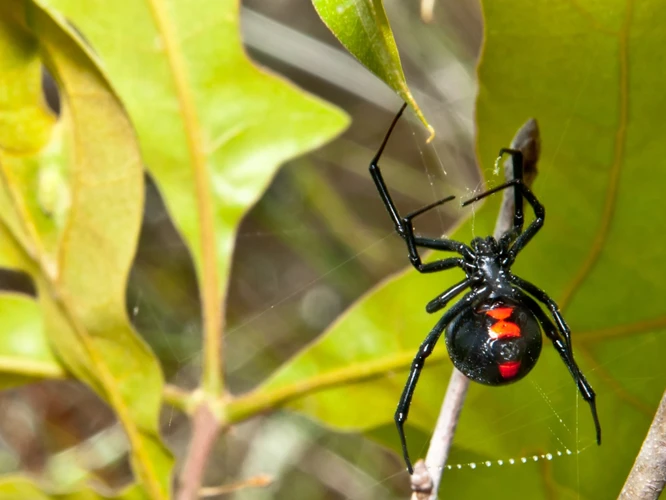As we venture out into nature, observing the wide variety of creatures that roam the earth can be both fascinating and perplexing. How do they establish their territories and defend them? Black widow spiders, in particular, have garnered a reputation for their territorial behavior and venomous bite. In this article, we’ll take a closer look at the physical characteristics and behavioral traits of black widow spiders, explore why they establish territories, and delve into the intricate ways in which they mark and defend their space. Join us on this journey to uncover the mysterious world of black widow spiders.
Understanding Black Widow Spiders
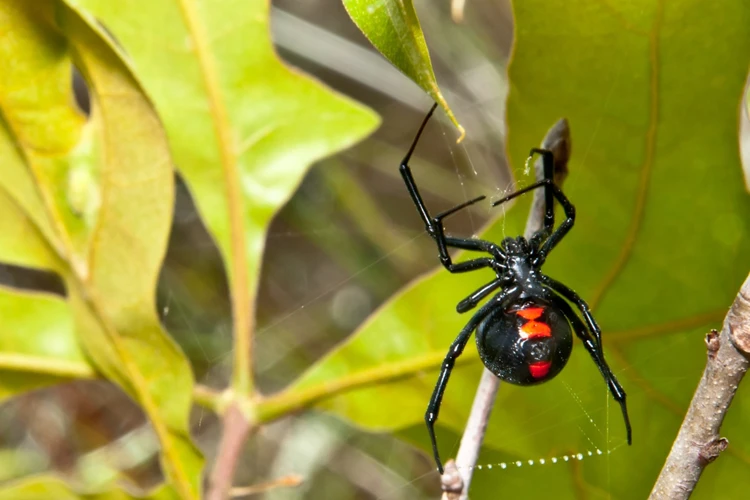
Understanding Black Widow Spiders: The black widow spider is one of the most feared and fascinating arachnids in the world. With their distinctive black bodies, red hourglass markings, and potent venom, these spiders have captured the imagination of people for generations. It’s important to study the physical characteristics and behavioral traits of black widow spiders in order to understand how and why they establish territories. By delving into the complex world of black widow spiders, we can gain a deeper appreciation for their place in the ecosystem. Let’s explore the intriguing aspects of black widow spider territory behavior and what drives their territorial instincts.
To learn more about the black widow spider’s territorial behavior, check out our analysis here.
Physical Characteristics
Black Widow Spiders have some unique physical characteristics that contribute to their territorial behavior. These spiders have a distinctive black or dark brown color, and females are larger than the males. In terms of size, females range from approximately 8 to 10 millimeters in length, while males are only about 3 to 4 millimeters long. The females’ bodies are round and shiny with a distinctive red hourglass shape on their abdomens.
Additionally, black widow spiders have some extraordinary abilities that give them a competitive advantage over others. For instance, they possess a potent venom that can paralyze their prey, which mainly consists of insects and other arthropods. They can also spin threads that are incredibly strong due to the silk’s protein composition. Black widows use this silk to create webs that serve as their homes and hunting grounds.
| Physical Characteristics |
| Distinctive black or dark brown color |
| Larger females: 8-10 mm in length |
| Smaller males: 3-4 mm in length |
| Rounded and shiny body |
| Distinctive red hourglass shape on the abdomen |
| Ability to spin strong thread due to protein composition |
| Wield a potent venom that can paralyze prey |
Understanding the physical characteristics is essential in understanding black widow spiders’ territorial behavior. The spiders use their unique abilities to establish and defend their territory against other spiders and animals. More information about black widow spiders’ territorial behavior can be found in the article about black widow territorial behavior, black widow territory defense, and female black widow spiders’ territory. Additionally, we compare black widow spiders’ territorial behavior with other spider species in the article, spider territorial behavior comparison to enable a better understanding of black widow spiders’ territoriality communication.
Behavioral Traits
Black widow spiders are known for their deadly reputation, but they also exhibit fascinating behavioral traits that contribute to their survival. These spiders are classified as solitary, meaning they prefer to live and hunt alone, so understanding their individual behaviors is key to learning about their territoriality.
Feeding Habits: Black widow spiders are notorious for their diet consisting of other insects, but they can also prey on small animals. The female black widow spider is known to consume its mate after copulation, a behavior evolutionary biologists speculate as a way to provide nutrients for the female’s egg production.
Nocturnal Activity: As nocturnal creatures, black widow spiders are most active at night. During the day, they often hide in shelters such as small crevices or burrows to escape from potential predators.
Mating and Reproduction: When male black widow spiders seek out a mate, they use chemical cues to locate females. Interestingly, males tend to avoid females that have already mated to limit competition for their sperm. Once a male locates a female, he will typically perform a courtship dance before copulating. Females can produce multiple egg sacs throughout their lifespan, with each containing hundreds of eggs.
Aggression: Despite their solitary lifestyle, black widow spiders are fiercely territorial and will defend their space aggressively. They are less likely to tolerate intruders in their web and will attack when threatened.
To better understand the behavioral traits and territoriality in black widow spiders, we must also examine their physical characteristics and habitat. For more information on these aspects of black widow spiders, check out our articles on web building, male avoidance, and territorial consequences.
Why Do Black Widow Spiders Establish Territories?
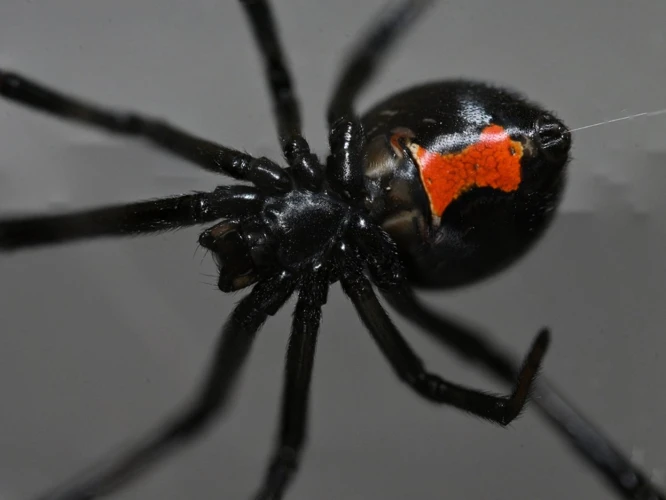
Black widow spiders are known for their aggressive behavior when it comes to defending their territory. But what causes them to establish territories in the first place? This question has been the subject of many studies and research. Several factors contribute to territorial behavior in black widow spiders.
Mating Opportunities: One of the primary reasons why black widow spiders establish territories is to attract mates. Male black widow spiders are known to be attracted to females who have established territories. As such, females who have their own space are more likely to find a mate and secure their reproductive future.
Resources: Black widow spiders also establish territories to secure resources such as food and shelter. By having their own space, they can defend their resources from other predators, including other spiders, insects and animals. Establishing a territory with ample food sources increases the likelihood of their survival and reproduction.
Competition: Competition is another reason why black widow spiders establish territories. They are known to aggressively fight over resources and mates. By establishing and defending territories, black widow spiders can minimize competition and improve their chances of breeding success.
Understanding these factors is crucial in understanding black widow spider behavior. By establishing their own territories, they can secure their resources, attract mates and reduce competition. In the next section, we’ll discuss in detail how black widow spiders establish territories.
[Internal HTML link: Read about black widow territory behavior]
How Do Black Widow Spiders Establish Their Territory?
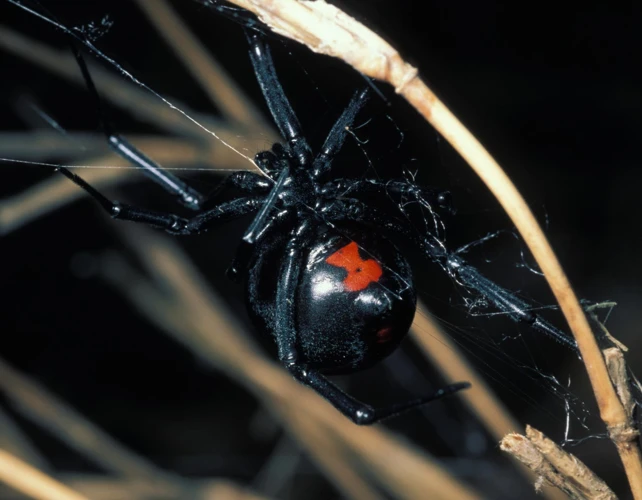
As we dive deeper into the intriguing world of black widow spiders, we turn our attention to an important question: How do these arachnids establish their territory? While their territorial behavior may seem straightforward, there are actually several fascinating methods that black widow spiders use to claim and maintain their space. Let’s explore these methods in detail, including how they weave their webs, leave scents, and even communicate with body language. By the end of this section, you’ll understand just how complex the process of establishing a black widow spider territory can be. For more information on black widow spider territoriality and communication, be sure to check out our previous article on the subject.
Weaving Webs
Black widow spiders are masters of weaving webs to establish their territories. They use their silk-spinning skills to create intricate designs that not only serve as a home for the spider but also act as a deterrent to potential invaders.
The Process of Weaving Webs
When black widow spiders are ready to establish their territory, they begin by choosing a location that is shaded and protected from the elements. Once they’ve found the right spot, they begin weaving their web with silk, which they produce from glands in their abdomen. The spinning process involves attaching a silk thread to an anchor point before pulling it tight and attaching it to another point.
The Design of their Webs
The design and construction of a black widow’s “bridge-line” web are unique. The spider usually creates an irregular pattern of tangled silk with a thick strand in the center that acts as an anchor. This anchor line, stretched vertically through the web, is the first thing to contact the prey-pushing the bow-shaped web into a tight spiral. When prey falls onto the web, the spider swiftly approaches and bites. But in addition to capturing prey, this design also serves as a warning to other spiders to stay away.
Using Webs for Communication
Black widow spiders also use their webs to communicate with other spiders. They create specific patterns of vibrations that are transmitted through their webs to alert other spiders of their presence. Likewise, certain vibrations can signify when a particular web has been abandoned and is available for another spider to take over. This type of communication ensures that only black widow spiders occupy a particular territory.
Weaving webs is a crucial step in establishing territories for black widow spiders. Their intricate designs not only serve as a home but also act as a deterrent to other spiders. These spiders use their webs for communication, which ensures the safety of their territories.
Leaving Scents
Black widow spiders are territorial creatures that use various methods to establish and defend their territories. One of the lesser-known methods is leaving scents.
These spiders have specialized scent glands located on their abdomen, near the spinnerets where they produce their silk. They release pheromones into the air by rubbing their abdomen on their webs and other surfaces. These pheromones can communicate a variety of messages to other spiders, such as “This is my territory” or “Mating season has begun.”
When black widow spiders detect pheromones left by another spider, they may avoid that area or become aggressive towards the intruder. This is an important method of communication for black widow spiders, as they do not have great eyesight and may rely heavily on their sense of smell.
Interestingly, different species of black widow spiders may leave different scents. The southern black widow, for example, leaves a distinctively sweet scent that is thought to lure prey towards its web. This scent can also attract male spiders during mating season.
Leaving scents is just one way that black widow spiders establish and communicate their territories. By using this method, they can claim an area as their own and deter other spiders from entering. It is truly amazing how these small creatures have evolved such complex communication strategies to survive in their habitats.
Using Body Language
Black widow spiders use body language to establish and defend their territory. They communicate through specific postures and movements which indicate aggression or submission. Here are a few examples:
- Hissing: Black widows can hiss by rubbing their legs together, which produces a distinct sound. This hissing can be a warning to intruders to stay away.
- Lifting their abdomen: If a black widow perceives a threat, they will lift their abdomen into the air, exposing the bright red or orange hourglass marking. This is a clear signal that they are prepared to defend themselves.
- Raising their front legs: Black widows may also raise their front legs in a defensive posture, ready to strike if necessary.
- Shaking their web: When threatened, black widows may shake their web vigorously as another warning signal.
These body language cues are essential for black widow spiders, as they don’t have the best vision and rely heavily on their senses to perceive the world around them. By using these clear nonverbal signals, they can communicate their intentions and protect their territory effectively.
It’s important to note that if you encounter a black widow spider, it’s best to keep your distance and avoid provoking it. Their venom can be harmful to humans and may have serious consequences. If you suspect that you’ve been bitten, seek medical attention immediately.
Defending Their Territory
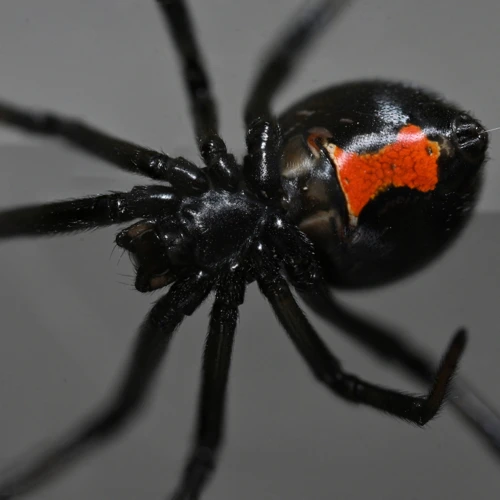
As vigilant defenders of their space, black widow spiders are willing to use any means necessary to protect their territory from invaders. Whether it’s biting and envenomating or playing dead to throw off predators, these arachnids are prepared to put up a fight. Let’s explore their defense mechanisms in greater detail.
Biting and Envenomating
When other spiders attempt to invade the territory of a black widow spider, they may face a fierce response. One way black widow spiders defend their territory is by biting and envenomating their opponents. The venom in black widow spiders is among the most potent of all spider venoms.
| Type of Venom | Effects on Prey |
|---|---|
| Alpha-latrotoxin | Causes continuous release of neurotransmitters, leading to muscle paralysis and respiratory failure. |
| Phospholipase A2 | Digests cell membranes, resulting in tissue damage and inflammation. |
| Latrodectin | Disrupts normal blood flow and can lead to kidney failure. |
Upon biting, a black widow spider injects a mixture of these venom components into its prey. The effects of the venom can be severe and may even be deadly for humans. Symptoms of a black widow spider bite can include intense pain, muscle spasms, and sweating.
However, black widow spiders are not aggressive towards humans and typically only bite in self-defense. If you encounter a black widow spider, it is best to keep your distance and avoid disturbing it. If you do get bitten, seek medical attention immediately.
In some cases, black widow spiders may also play dead as a way of defending their territory. This behavior can trick other spiders into thinking the black widow is already dead, and they will move on to a new territory. The territorial behavior of black widow spiders is a fascinating aspect of their complex behavior.
Playing Dead
Black widow spiders are known for being fierce defenders of their territory. However, there are times when even the most fearsome of predators need to use a more subtle approach. In certain situations where a black widow spider feels threatened or outnumbered, it may resort to “playing dead” as a means of avoiding conflict.
The Art of Playing Dead
When a black widow spider decides to play dead, it goes through a series of motions and contortions that make it appear lifeless. This behavior is known as thanatosis, and it is characterized by the spider laying motionless on its back with its legs curled up tight against its body. In some cases, the spider may even let out a foul-smelling odor to further discourage predators from attacking.
The Purpose of Playing Dead
Playing dead is a strategy used by black widow spiders to avoid being attacked by predators that are larger or more powerful than they are. By appearing dead, the spider is hoping that the predator will lose interest and move on to easier prey. This behavior also allows the black widow spider to conserve energy and avoid injury.
When is Playing Dead Necessary?
Playing dead is typically a last resort for black widow spiders. They will first try to scare away predators using body language and threatening postures, and if that doesn’t work, they may resort to biting and envenomating. If they are still facing overwhelming odds, they may choose to play dead as a means of survival.
Does Playing Dead Always Work?
While playing dead can be an effective defense mechanism for black widow spiders, it is not foolproof. Some predators may still be interested in attacking a lifeless spider, especially if they are very hungry. Additionally, some predators may be able to detect that the spider is not actually dead and will attack regardless.
Playing dead is just one of the many strategies that black widow spiders use to establish their territory and defend themselves against threats. It is a fascinating behavior that highlights the incredible adaptability and resourcefulness of these remarkable predators.
Interactions with Other Spiders
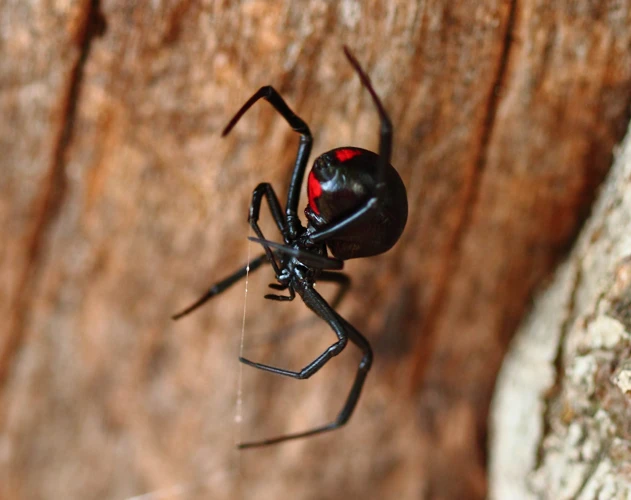
Black widow spiders are infamous for their territorial nature and fierce behavior towards intruders. When it comes to their interactions with other spiders, things can get pretty intense. Black widow spiders do not tolerate other spider species or even their own kind in their territory. They are known to exhibit aggressive behavior towards intruding spiders, often resulting in fatal consequences for the trespassers.
The interactions between black widow spiders and other spider species are largely characterized by competition for resources and mates. Since black widow spiders are apex predators in their ecosystem, they are able to outcompete most other spider species for prey. This means that other spider species have to either find alternative food sources or risk entering the black widow’s territory in search of prey.
When a spider enters a black widow’s territory, it is met with hostility. Black widow spiders are known to be highly aggressive towards intruders, attacking them on sight. However, some spider species have developed mechanisms to avoid confrontation with black widow spiders. For example, some spiders are able to recognize black widow webs and will avoid them to prevent accidental entry into their territory.
In addition to competition for resources, black widow spiders are also highly territorial when it comes to mating. Male black widow spiders have to approach females with caution, as they risk being mistaken for prey and attacked if they enter her territory without proper courtship behavior. Even after mating, male black widows are sometimes killed by females, as they pose a potential threat to her offspring.
The interactions between black widow spiders and other spider species are largely characterized by competition and aggression. The black widow spider’s territorial behavior is an integral part of its survival strategy, ensuring that it has access to resources and mates while also protecting its offspring from potential threats.
The Benefits of Territoriality for Black Widow Spiders
Establishing and defending territories is a crucial aspect of black widow spider behavior, and it offers several benefits to these arachnids. Firstly, having a designated area that they can call home ensures that black widow spiders have access to ample resources such as food, water, and shelter. By controlling their environment, they can choose the most optimal locations for hunting, mating, and building webs.
In addition to resource availability, territoriality also plays a key role in the reproductive success of black widow spiders. As we previously mentioned, female black widows are known for being highly cannibalistic, especially towards males. However, by establishing their territory and attracting males through pheromones, females can increase their chances of finding a mate without being consumed by their potential partner. Having a designated territory for courtship and mating decreases the likelihood of competition from other females for the same mate.
Territorial behavior also plays a crucial role in protecting the offspring of black widows. After the female lays eggs, she stays nearby to guard and protect them from potential threats, both from other spiders and environmental factors. This protective behavior provides the eggs with a greater chance of survival until they hatch and develop into spiderlings, which are capable of dispersing and establishing their territories.
Finally, territoriality also benefits black widow spiders by helping to regulate the population density of their species. By controlling their environment and limiting competition, black widow spiders can keep their population in check, ensuring that resources don’t become depleted and that their species can thrive without overcrowding.
The benefits of territoriality for black widow spiders are clear. By establishing and defending their territories, these arachnids have access to ample resources, improve their chances of successful reproduction and offspring survival, and effectively regulate their populations.
Conclusion
In conclusion, it is clear that black widow spiders are fascinating creatures that have evolved unique behaviors and physical characteristics to establish and defend their territories. These spiders are known for their striking physical appearance, including their shiny black bodies and red hourglass markings. They are also well-known for their venomous bite, which can be dangerous to humans.
Despite their fearsome reputation, however, black widow spiders play an important role in maintaining ecological balance in their habitats. By establishing their territories and defending them against other spider species, black widow spiders help to control pest populations and prevent overgrazing of vegetation.
Through careful observation and study, researchers have learned that black widow spiders use a variety of strategies to establish and defend their territories. From weaving intricate webs to leaving scent marks and using body language to communicate with other spiders, black widow spiders are remarkably adaptive and resourceful.
Overall, the study of black widow spider territoriality provides insights into the complex and sophisticated behavior of one of nature’s most fascinating creatures. While these spiders may stir feelings of fear and dread in some, they also offer a window into the intricacies and wonders of the natural world.
Frequently Asked Questions
What is the diet of a black widow spider?
Black widow spiders primarily feed on insects, but they are also known to eat other spiders and even small animals such as lizards and mice.
Are black widow spiders dangerous?
Yes, black widow spiders are considered highly venomous and their bites can be harmful to humans, especially young children and the elderly.
What do black widow spiders look like?
Black widow spiders are usually small, shiny black spiders with a distinctive red hourglass-shaped mark on their abdomens. Females are larger than males and have a more rounded abdomen.
Do black widow spiders spin webs?
Yes, black widow spiders are known for their distinctively strong and sticky webs, which they use to catch prey as well as establish their territory.
How do black widow spiders mate?
Male black widow spiders will approach a female and attempt to mate with her by using special courtship movements and vibrations to avoid being attacked or eaten.
Do black widow spiders live alone or in groups?
Black widow spiders are generally solitary creatures but can occasionally be found living in small groups in their established territories.
How long do black widow spiders typically live?
Black widow spiders can live up to three years in optimal conditions.
Do black widow spiders have any natural predators?
Some birds, as well as some larger spiders, such as tarantulas, are known to occasionally prey on black widow spiders.
Can black widow spiders be kept as pets?
Although some people do keep black widow spiders as pets, it is not recommended due to their venomous bites.
How can I prevent black widow spiders from infesting my home?
It is important to keep your home clean and free from clutter, seal up any cracks or gaps, and eliminate any sources of standing water to deter black widow spiders from seeking shelter and establishing their territories.

